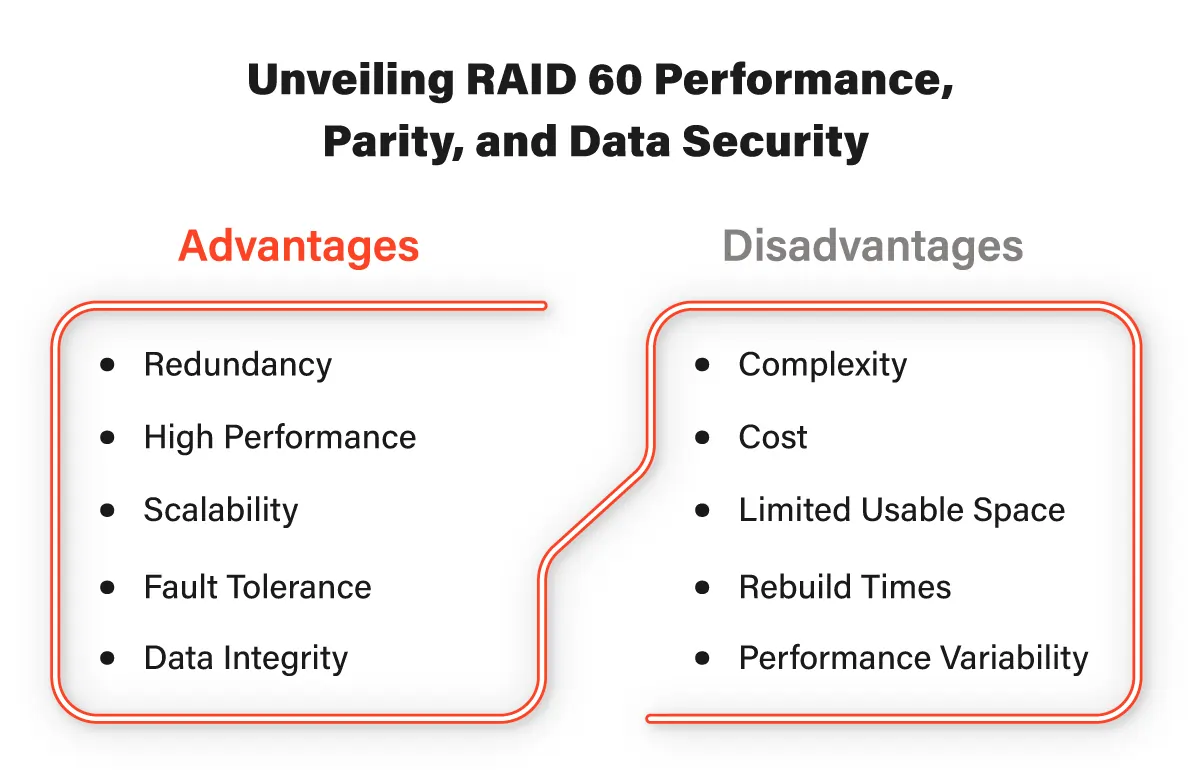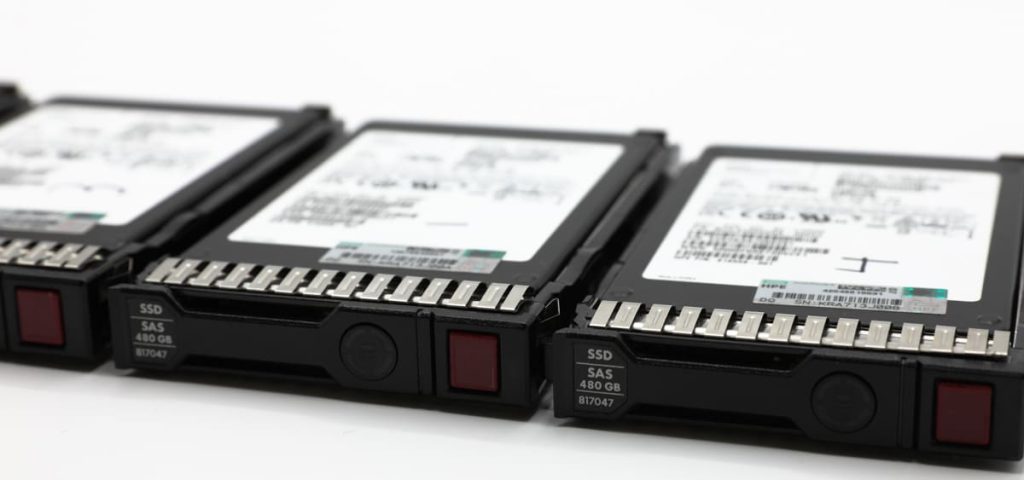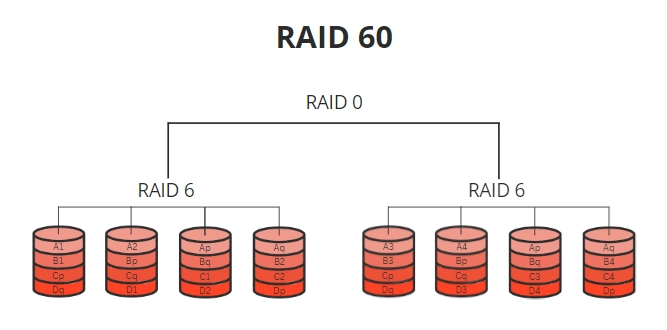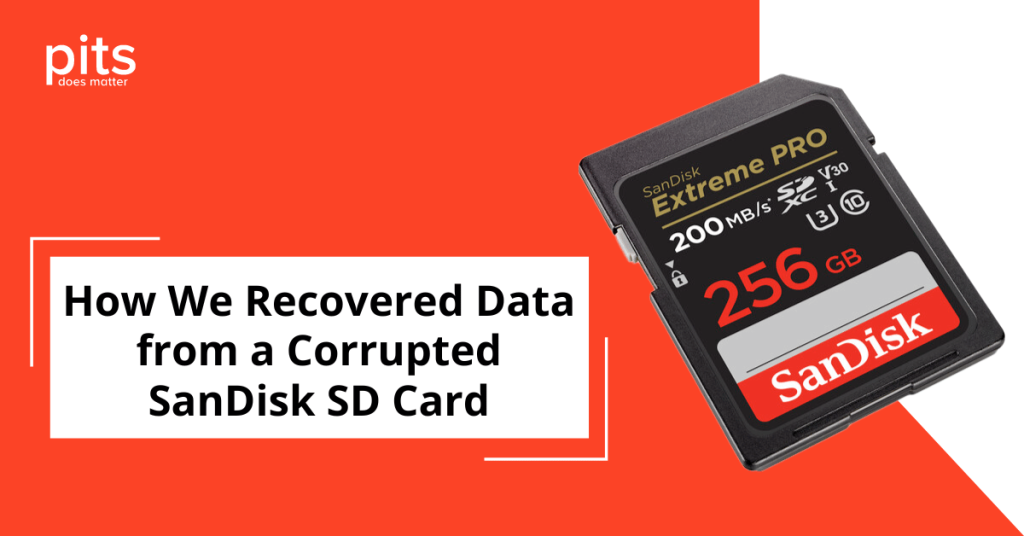In the ever-evolving landscape of data storage solutions, balancing performance, capacity, and data security is a constant challenge. This is where RAID (Redundant Array of Independent Disks) configurations come into play. Among the array of RAID options available, RAID 60 stands out as a compelling choice for those seeking the perfect equilibrium between performance and data protection. In this comprehensive guide, we will delve deep into the world of RAID 60, exploring its features, benefits, and how it compares to other RAID configurations.

Understanding RAID 60
RAID 60, also known as RAID 6+0, is a nested RAID configuration that ingeniously combines the striping capabilities of RAID 0 with the double parity protection of RAID 6. This fusion of features delivers an optimal balance between performance and data redundancy, making it an attractive choice for various applications.
RAID 0 Array Striped
To grasp RAID 60, it is crucial to understand its foundational elements. RAID 0, characterised by striping, divides data into blocks and distributes them across multiple drives. This striping methodology significantly enhances both read and write performance, but it comes at a cost: there is no inherent data redundancy. In essence, it is like splitting a puzzle into pieces and scattering them across different tables, making the puzzle assembly faster but risky if a table collapses.

Distributed Double Parity of RAID 6
At the heart of RAID 60 lies the double parity protection borrowed from RAID 6. In RAID 6, data is safeguarded by distributing not one but two parity blocks across the array. This means that even if two drives within a RAID 6 set fail simultaneously, your data remains secure. Double parity is akin to having two spare keys to your house, ensuring that even if one is lost or damaged, the door can still be unlocked.
RAID 60 Minimum Drives Requirement
RAID 60 mandates a minimum of four drives for operation. It typically thrives in environments with more robust arrays, often utilising eight or more disks. This requirement ensures a sufficient number of drives to create the nested structure essential for RAID 60’s robust data protection capabilities.
RAID 60 Performance and Capacity
One of the central appeals of RAID 60 is its ability to balance performance and capacity. Thanks to the RAID 0 striping, RAID 60 offers superior read and write performance compared to standalone RAID 6. However, it does not compromise on data protection, making it an attractive option for applications that require both speed and reliability.
How RAID 60 Works?
To better comprehend how RAID 60 operates, let’s delve into the intricacies of its architecture.
Striping of RAID 0
RAID 60 employs a multi-tiered approach to data organisation. Initially, data is striped across multiple RAID 0 sets. This involves dividing data into blocks and distributing them across a series of drives. Think of it as arranging books in a library, where each book represents a data block. These books are evenly distributed across multiple shelves (drives), making it faster to find and retrieve the information you need.
Straight Block-Level Striping
Within each RAID 0 set, straight block-level striping is applied. This technique ensures that data is divided into equally sized blocks and then written across the drives sequentially. Imagine taking a long essay and breaking it into paragraphs, with each paragraph written across different sheets of paper. This way, when you want to read the entire essay, you can access multiple paragraphs simultaneously, making the reading process faster.
Distributed Parity
Here comes the magic of RAID 60: distributed double parity. While RAID 0 focuses on speeding up performance, RAID 60 integrates the double parity protection of RAID 6 within each RAID 0 set. This means that not only is your data swiftly accessible, but it’s also guarded by two levels of parity information distributed strategically across the disks. This dual-layered protection is akin to having both a security guard and a high-tech alarm system to safeguard your valuables.

The Benefits of RAID 60
Now that we have dissected the mechanics of RAID 60 let’s explore the tangible benefits it offers to businesses and data storage enthusiasts.
Robust Data Protection
At its core, RAID 60 is all about data security. With its distributed double parity, it can withstand the failure of up to two drives within the same RAID 6 set without compromising data integrity. This level of redundancy and reliability surpasses what’s offered by RAID 5 or RAID 50 arrays, making it an ideal choice for critical data environments.
High-Performance Computing
Performance is a paramount concern for many organisations, especially those engaged in data-intensive operations. RAID 60’s combination of RAID 0 striping and RAID 6 double parity means that it provides excellent read and write performance. Whether you are dealing with massive data sets, databases, or multimedia content, RAID 60 can handle the load with ease.
Scalability
As your data storage needs grow, RAID 60 is ready to expand with you. It’s highly scalable, allowing you to add more drives to the array as your requirements evolve. This flexibility ensures that your storage solution remains cost-effective and adaptable over time.
Redundancy and Reliability
In a world where data is often the lifeblood of organisations, redundancy and reliability are non-negotiable. RAID 60 delivers on both fronts. The distributed double parity ensures that data is safeguarded even in the event of multiple drive failures, reducing the risk of downtime and data loss.
RAID 60 is a powerful, versatile, and well-balanced RAID configuration that effectively addresses the needs of modern data storage environments. By merging the speed of RAID 0 with the double parity protection of RAID 6, it offers an optimal blend of performance and data security.
Whether you’re running a mission-critical data centre, managing vast multimedia libraries, or overseeing a business’s growing data storage needs, RAID 60 is a reliable choice that can handle the demands of today and adapt to the challenges of tomorrow. In the ever-expanding universe of data storage solutions, RAID 60 shines as a beacon of efficiency and security.
Frequently Asked Questions
What is RAID 60, and how does it work?
RAID 60 is a nested RAID configuration that combines RAID 0 striping and RAID 6 double parity. Data is first striped across multiple RAID 0 sets and then protected with double parity within each set. This offers both high performance and robust data protection.
How many drives are required for a RAID 60 setup?
A minimum of four drives is required for RAID 60, though it is typically implemented with eight or more drives to fully utilise its capabilities.
What are the advantages of RAID 60 over RAID 6 or RAID 0?
RAID 60 provides the best of both worlds. It offers superior performance compared to RAID 6 due to RAID 0 striping while providing strong data protection with double parity, unlike RAID 0.
Can RAID 60 be scaled as storage needs grow?
Yes, RAID 60 is highly scalable. You can expand your RAID 60 array by adding more drives to accommodate increasing storage requirements.


